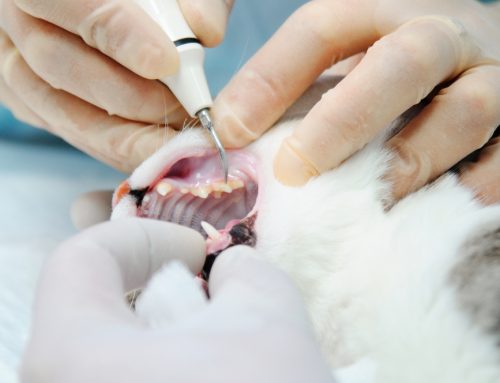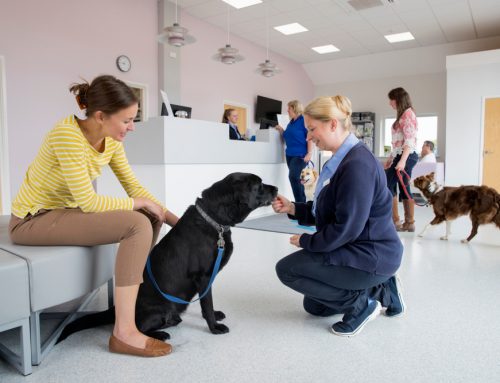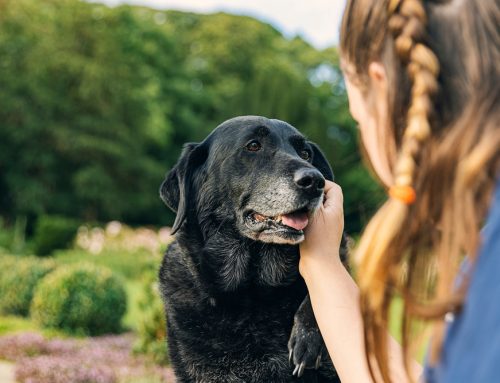Summer has a dark side for many pets. Sandwiched between days of idyllic sunshine, fresh air, and quality family time are periods of intense fear, uncertainty, and confusion. Noise aversion (i.e., noise sensitivity or phobia) is characterized by an intense and fearful reaction to loud sounds, such as summer fireworks and thunderstorms. At Bolton Veterinary Hospital, we know you don’t want your pet to live in fear. Understanding noise aversion and taking a few proactive steps will help your pet cope with a noisy event and cancel their summer suffering.
The ripple effect of anxiety in pets
While accepting a pet’s dramatic reactions as a natural part of their personality—especially when they occur infrequently—is tempting, noise aversion is a condition that typically worsens with time. Like fireworks bursting from starry points, noise aversion can have a ripple effect on your pet’s mental health. Each fearful event can increase their sensitivity to sound and strengthen their negative reaction. Noise aversion is closely related to separation anxiety and generalized anxiety, and has been known to evolve into one or both conditions.
What does noise aversion in pets look like?
Noise-averse pets can demonstrate a wide behavior range. Unfortunately, many owners miss their pet’s subtle signs, and these pets go untreated. Indications that your pet may suffer from noise aversion include:
- Vocalizing
- Restlessness
- Hiding, or attempting to escape or leave the area
- Misdirected aggression (e.g., targeting a fellow house pet)
- Seeking attention
- Destructive behavior (e.g., chewing or digging at furniture, flooring, or walls)
Subtle signs may include:
- Personality changes
- Lethargy
- Panting in a cool environment
- Whale-eye (i.e., showing the whites of their eyes)
- Repeated yawning or scratching
Prepare for anything—and everything
Knowing a noisy event is approaching allows you time to prepare your pet, but the world doesn’t always stick to schedules or forecasts. Real-time solutions are needed to keep your noise sensitive pet safe and calm. Let’s begin with what to do for a known event.
- For anticipated noise:
-
- Talk to your veterinarian — A physical exam can rule out any medical causes of anxious behavior.
- Consider medication — Some pets need only a little extra help. Safe, effective pharmaceutical and supplement options are available to help reduce anxiety. Medications are an excellent part of your pet’s plan, but should never be the whole plan. For the best results, use prescriptions in combination with management strategies.
- Establish a safe room — This should be a quiet space with a familiar bed and toys, and, if your pet uses one, a crate with the door left open. Prepare your pet and administer medications early, well before the anticipated noise, so they will be comfortable—and may not notice—when it begins.
- Drown out the noise — Soothing music, a quiet television, or white noise tracks can muffle the offensive sounds outside.
- Use distractions — Offer food-dispensing toys, or hollow toys filled with soft foods, to occupy your pet’s mind. Snuffle mats are a great DIY option that encourage your dog to sniff out hidden treats. Licking, chewing, and sniffing are satisfying—and tiring—activities for pets. Supervision is always recommended.
- Be aware of exits — Take your pet outside to eliminate in advance of the event, and then make sure all windows and doors stay closed. Pets often escape their homes and yards during fireworks and storms, when panic overwhelms them. Keep your pet indoors, and ensure everyone in the home knows the rules.
- Think in new ways — For a long-term solution, consult a veterinary behaviorist or positive reinforcement-based dog trainer. These professionals can help your dog learn new and positive associations to previously frightening experiences.
- For sudden storms—and fireworks on a Tuesday in October

-
- Stay calm — Your pet will react to your emotions, so set a good example.
- Bring your pet indoors — Never leave a scared pet outside, if possible.
- When on the road — Consider your car a mobile dog crate, and let your pet stay where they feel safest (e.g., on the floor between the seats).
- Block the view — Isolate your pet from visual stimuli. Interior rooms are best, or a secure crate covered with a blanket to simulate a den and help your pet feel protected. In a pinch, any visual barrier or small space will do.
- Block the sound — Use a white noise app on your phone, or turn on a radio or television.
- Use a wrap — Some pets are reassured by a gentle pressure garment. Anxiety wraps are available for dogs and cats, but a snug T-shirt or jacket can give similar results.
- Do not feed the fear — Contrary to popular belief, reassuring your pet when they are scared will not make them less fearful. Soothe your pet by speaking gently. You may relax, too!
Living with a noise averse pet is stressful for everyone involved, yet doesn’t need to be. A proactive approach to your pet’s behavior can prevent the condition from escalating into more disruptive forms of anxiety. With the help of our team, and a few environmental modifications, your pet can sail through any storm.
For more suggestions on conquering your pet’s anxiety, or to find out if medication is the right choice for your beloved companion, contact us at Bolton Veterinary Hospital.







Leave A Comment